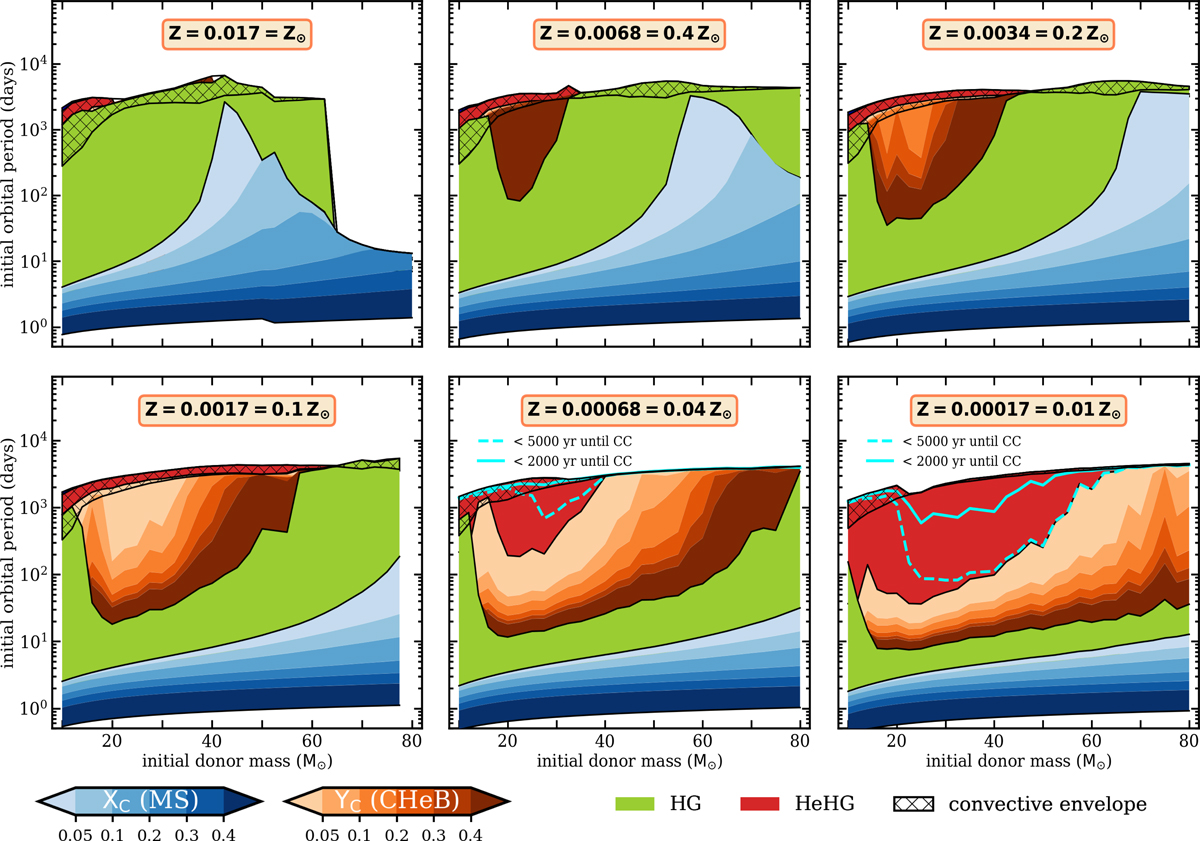Fig. 3.

Evolutionary state of a donor star at the point of RLOF in massive interacting binaries as a function of initial donor mass (at the ZAMS) and initial orbital period, estimated based on the single stellar tracks presented in Sect. 3.1. The companion is assumed to be twice less massive (initial mass ratio q = 0.5), and it can be viewed as either a less massive star or under additional assumptions about the previous evolution (see text) as a stellar BH. Different shades of blue (orange) correspond to different central abundances of hydrogen (helium), indicating how advanced the MS (CHeB) evolution is. Hatched regions indicate donors with outer convective envelopes (at least 10% in mass coordinate). Cyan lines mark the threshold above which the donors are only 2000 or 5000 years away from the core-collapse (only shown for the two lowest metallicities for clarity).
Current usage metrics show cumulative count of Article Views (full-text article views including HTML views, PDF and ePub downloads, according to the available data) and Abstracts Views on Vision4Press platform.
Data correspond to usage on the plateform after 2015. The current usage metrics is available 48-96 hours after online publication and is updated daily on week days.
Initial download of the metrics may take a while.


